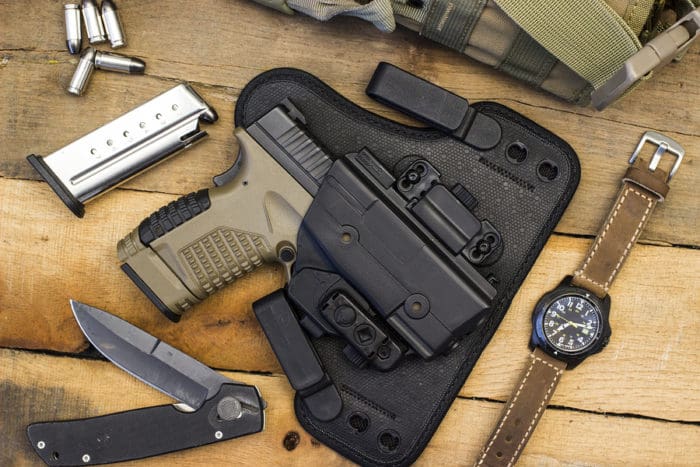When it comes to entering the world of concealed carry, it’s easy to get lost in the weeds. You have to choose the type and brand of handgun, the size of the gun, its caliber, trigger type and more.
You have to choose your carry system(s): inside-the-waistband or outside-the-waistband holster, ankle carry, pocket carry, etc. You need a system that works for type of handgun you have and its size. While this post won’t help you negotiate the first part of that maze, there are three things you must have when carrying a concealed firearm . . .
1. A clear mind
If you’re not sure when you should use your carry gun you may delay shooting an attacker or attackers just long enough to be killed or grievously wounded. Or watch someone else, an innocent, be killed or wounded.
Not to put too fine a point on it, hesitation kills. To avoid deadly analysis paralysis, you must consider these situations and have a clear idea when you will (and, just as important, won’t) use deadly force.
In terms of your legal right to use deadly force, state laws vary. Know your local laws and abide by them.
In practical terms, you should use deadly force if an attacker poses an imminent, credible threat of death or grievous bodily harm to yourself or other innocent life. Simply put, if the bad guy is in the act of trying to kill or seriously injure you or some other innocent person, and the perp has a reasonable chance of succeeding, deadly force is justified (again, consult your local laws and an attorney).
2. A good holster
Defensive gun use statistics are less reliable than mainstream media “news” reports. Even so, virtually all researchers tend to agree that the vast majority of defensive gun uses end without a shot being fired. The bad guy sees the good guy’s gun and decides to move along.
Assuming that’s true, showing your gun is more important than shooting your gun. And even if it isn’t, the combatant who lands rounds soonest is the likely winner. So whether you end up shooting a bad guy or not, the faster you get to your gun, the better.
To maximize draw speed, you need a gun and holster combination that provides the quickest possible access to your firearm. I carry my self-defense firearm in an outside-the-waistband (OWB) holster because I can get to it in a flash. You may find OWB carry impractical, uncomfortable, awkward or more difficult than an inside-the-waistband holster or pocket carry.
A holster that works well for one person may be awkward and ineffective your someone else. Choose what fits your preference and circumstances. Just make a good holster priority one.
3. The ability to shut up
If you’re involved in a defensive gun use — shots fired or not — the cops will interrogate you. They’ll try to get as much information from you as possible. They’ll play good cop, bad cop. They’ll tell you that you’re fine, they won’t be pressing charges.
There is some information that you should give them: your name and address and a description of the perp or perps. You should also point out any witnesses or evidence (e.g., shell casings) they may have missed. Other than that, you need to shut up.
Whether or not the cops arrest you, remember that you have the right to remain silent…they’ll tell you that, just like on TV. And just like on TV, everything you say can be used against you in court.
Keep in mind that you have the right not to provide ammunition for a prosecutor or ambulance chasing lawyer. One you provide the basic information, you have every right to politely tell the cop, “You know what officer, I’m kinda shaken-up right now. I’d like to talk to my lawyer before making a full statement.”
Some gun gurus recommend answering any and all questions with the mantra, “My life was in danger.” To minimize the chances of incarceration or a successful civil suit, it’s best to err on the side of silence.
Those of us who carry firearms hope we never have to use them to defend ourselves. But thinking through the process in advance can help you deal with it most effectively. Consider the possibilities and situations carefully and know what to do if the worst happens. Your life and your freedom may depend on it.
